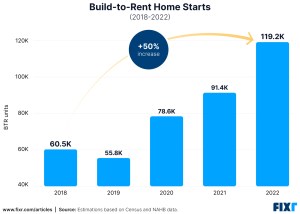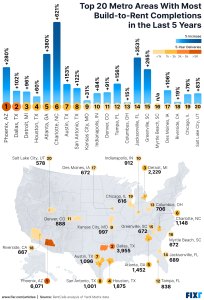You will own nothing. Accessory Dwelling Units (ADUs) have grown in popularity in recent years. America has recently imported a concept stemming from across the pond in the UK to pacify housing fears. Build-to-rent (BTR) communities are becoming a common development as the majority of Americans struggle to either afford or find housing.
Around 23% of Americans own property. YouGov conducted a poll that found that 60% of Americans believe the old model whereby 30% of one’s income would equate to affordable housing. That is simply not possible for over a quarter of Americans who spend far more than 30% on their mortgages. Almost half (49%) of renters spend 30% or more on shelter, while 19% spend over half of their take-home pay to the landlord. According to the survey, 46% of homeowners are worried about making their monthly mortgage payments, compared to 69% of renters.
Build-to-rent communities usually mimic a typical suburbia rather than an apartment complex. Amenities and property management is often included, which is why this concept was once reserved for retirees and the aging population. This is a deal for investors who may purchase homes within the development communities. They are usually priced higher than typical rentals as the home is within a more desirable community with stable tenants and a lower turnover. As for the tenants, they are not gaining any equity and are forgoing a valuable asset.
Fixr reported that build-to-rent communities are set to grow within the next two years based on data from the NAHB but will remain somewhat stagnant in 2023 due to massive growth in recent years. Over 119,000 homes using this model were built in 2022, marking a 50% increase from 2018. In the last five years, Charlotte, NC, experienced a 621% uptick in built-to-rent communities, followed by Jacksonville, Florida (353%), Greenville, South Carolina (265%), while Phoenix, Arizona, experienced a 280% uptick.
The younger generation, who want to begin expanding their families but cannot afford to own them, is primarily attracted to these growing complexes that provide the feel of homeownership without the asset. Everyone needs a place to live. Families, especially with young children, do not tend to move around as often with school zoning and other aspects. Homeownership and the traditional American dream of the house with the white picket fence have been transformed.











